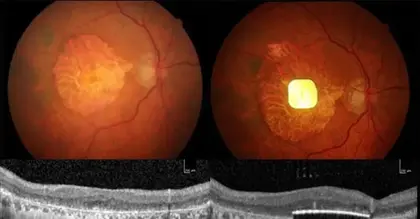Note: This document contains side effect information about regadenoson. Some dosage forms listed on this page may not apply to the brand name Lexiscan.
Applies to regadenoson: intravenous solution.
Serious side effects of Lexiscan
Along with its needed effects, regadenoson (the active ingredient contained in Lexiscan) may cause some unwanted effects. Although not all of these side effects may occur, if they do occur they may need medical attention.
Check with your doctor or nurse immediately if any of the following side effects occur while taking regadenoson:
More common
- Arm, back, or jaw pain
- chest pain or discomfort
- difficult or labored breathing
- fast or irregular heartbeat
- nausea
- sweating
- tightness in the chest
Incidence not known
- Confusion
- difficulty swallowing
- dizziness, faintness, or lightheadedness when getting up suddenly from a lying or sitting position
- fainting
- irregular heartbeat recurrent
- large, hive-like swelling on the face, eyelids, lips, tongue, throat, hands, legs, feet, or sex organs
- puffiness or swelling of the eyelids or around the eyes, face, lips, or tongue
- rash, hives, or itching skin
- trembling or shaking of the hands or feet
- unusual tiredness or weakness
Get emergency help immediately if any of the following symptoms of overdose occur while taking regadenoson:
Symptoms of overdose
- Dizziness
- feeling of warmth
- increased heart rate
- redness of the face, neck, arms, and occasionally, upper chest
Other side effects of Lexiscan
Some side effects of regadenoson may occur that usually do not need medical attention. These side effects may go away during treatment as your body adjusts to the medicine. Also, your health care professional may be able to tell you about ways to prevent or reduce some of these side effects.
Check with your health care professional if any of the following side effects continue or are bothersome or if you have any questions about them:
More common
- Headache
Less common
- Change in taste
- loss of taste
- stomach soreness or discomfort
Incidence not known
- Diarrhea
- difficulty with moving
- joint pain
- muscle aching or cramping
For Healthcare Professionals
Applies to regadenoson: intravenous solution.
General
The most common adverse reactions were dyspnea, headache, rhythm or conduction abnormalities, flushing, and rhythm abnormalities.[Ref]
Cardiovascular
Very common (10% or more): Rhythm or conduction abnormalities (26%), flushing (up to 23%), rhythm abnormalities (20%), ECG ST segment changes (18%), premature ventricular contractions (14%), angina pectoris or ST segment depression (12%)
Common (1% to 10%): Premature atrial contractions, first degree atrioventricular (AV) block (PR prolongation greater than 220 msec), ventricular conduction abnormalities, decreased systolic blood pressure (greater than 35 mmHg), decreased diastolic blood pressure (greater than 25 mmHg), angina pectoris, AV block, tachycardia, palpitations, other ECG abnormalities including QTc prolongation, hypotension, ST to T depression of 2 mm or more
Uncommon (0.1% to 1%): Second degree AV block, AV conduction abnormalities other than AV block, cardiac arrest, myocardial infarction, complete AV block, bradycardia, atrial flutter, atrial fibrillation (new-onset, worsening, or recurrent), hypertension, pallor, peripheral coldness, increased systolic blood pressure (50 mmHg or more), increased diastolic blood pressure (30 mmHg or more), ST to T elevation of 1 mm or more, acute coronary syndrome
Postmarketing reports: Ventricular arrhythmias, supraventricular tachyarrhythmias, asystole, marked hypertension, symptomatic hypotension[Ref]
Respiratory
Pre-specified respiratory adverse reactions included dyspnea, wheezing, obstructive airway disorder, dyspnea exertional, and tachypnea.[Ref]
Very common (10% or more): Dyspnea (up to 29%), pre-specified respiratory adverse reaction (up to 19%)
Common (1% to 10%): Wheezing, throat tightness, throat irritation, cough
Uncommon (0.1% to 1%): Tachypnea
Postmarketing reports: Respiratory arrest, respiratory distress, oxygen saturation decreased[Ref]
Nervous system
Very common (10% or more): Headache (27%), dizziness (up to 11%)
Common (1% to 10%): Dysgeusia, paresthesia, hypoesthesia, severe headache
Uncommon (0.1% to 1%): Convulsions, syncope, transient ischemic attack, unresponsiveness to stimuli, depressed level of consciousness, tremor, somnolence, tinnitus
Rare (less than 0.1%): Cerebrovascular accident
Postmarketing reports: Intracranial hemorrhage[Ref]
Other
Very common (10% or more): Chest pain (up to 19%), chest discomfort (13%)
Common (1% to 10%): Malaise, asthenia
Uncommon (0.1% to 1%): General body pain[Ref]
Gastrointestinal
Very common (10% or more): Gastrointestinal discomfort (15%)
Common (1% to 10%): Nausea, abdominal discomfort, vomiting, oral discomfort
Uncommon (0.1% to 1%): Abdominal distention, diarrhea, fecal incontinence
Postmarketing reports: Abdominal pain[Ref]
Musculoskeletal
Common (1% to 10%): Back or neck or jaw pain, pain in extremity, musculoskeletal discomfort
Uncommon (0.1% to 1%): Arthralgia[Ref]
Dermatologic
Common (1% to 10%): Hyperhidrosis
Uncommon (0.1% to 1%): Angioedema, urticaria, rash, erythema[Ref]
Ocular
Uncommon (0.1% to 1%): Vision blurred, eye pain[Ref]
Psychiatric
Uncommon (0.1% to 1%): Anxiety, insomnia[Ref]
Immunologic
Uncommon (0.1% to 1%): Anaphylaxis[Ref]
Local
Uncommon (0.1% to 1%): Pain at injection site[Ref]




